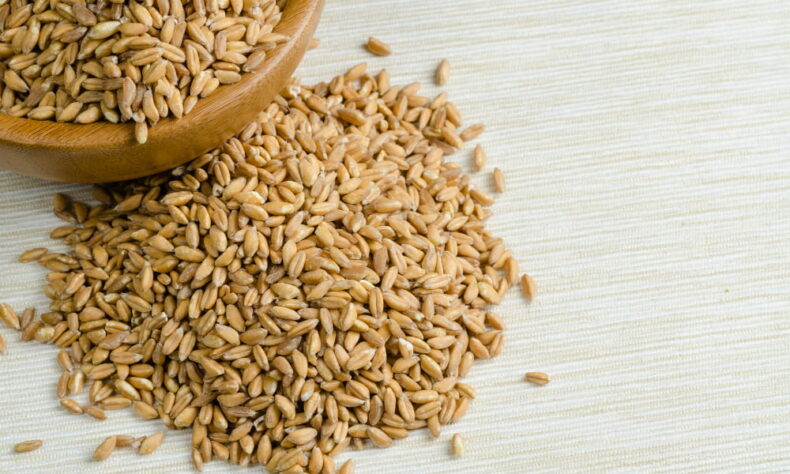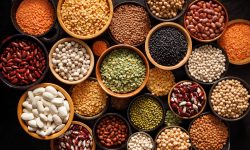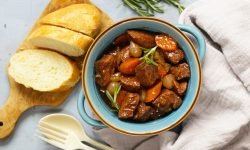Donating 10,000 meals in Pulses! For #WorldPulsesDay Spud is donating 10,000 meals worth with pulses…
Only three years ago–during those university days–my meal decisions only really ever revolved around whole grain rice and white rice. It wasn’t until recent years that I’ve really paid attention to exploring other grains, especially ancient grains. Maybe they’ve always been around, and I just never noticed–the student loan budget tended to limit the options. But I can safely say that that has only made the newfound culinary diversity so much more of a luxury.
Two ancient grains that have particularly caught my attention recently are farro and wheat berries. They look almost the same, are both whole grains, and share similar taste and texture. But how do they match up against each other nutritionally?
Farro
What is farro?
Farro is the whole kernel of three different species of wheat: emmer, einkorn, and spelt. Despite a recent revival of popularity in the west, farro has fed many parts of the world for thousands of years. This ancient grain had a long history in the Fertile Crescent– the area around the western parts of modern-day Middle Eastern countries stretching into parts of eastern Egypt–even before reaching Ancient Rome in 44BC.
By the beginning of the 20th century, farro had quickly been replaced by other grain products, but that doesn’t mean we shouldn’t include it in our diet. In fact, farro actually comes with tremendous nutritional values. A single cup of uncooked farro offers 20 grams of fibre and 24 grams of protein. It is also rich in vitamin B3, magnesium, zinc, and iron.
As the modern diet tends to lack fibre, farro would be an excellent addition to our meals. And if you’re a plant-based eater, the protein content will definitely provide an adequate boost. It also contains a wide spectrum of antioxidant compounds including polyphenols, carotenoids, phytosterols, and selenium.
How to cook farro.
Perhaps one of the most daunting feelings when it comes to incorporating an unfamiliar ingredient to your diet is the lack of knowledge on how to prepare the food. Cooking farro is actually super easy. Take a 2:1 water-to-grain ratio and add them into a pot. Bring to a boil then let it simmer for about 20 to 30 minutes, or until all the liquid has been absorbed by the grain. From then on, you can add it to your favourite soups, salads, or in place for a bowl of rice!
Wheat Berries
What are wheat berries?
Wheat berry is the whole kernel of the common wheat. Although wheat berries cook and eat like grains, they are botanically a type of fruit called caryopsis. It is unclear how early people began using wheat berries, but as archaeological evidence suggests that wheat was cultivated as early as 9600 BCE in the Fertile Crescent region, it is probable that wheat berries also became a common grain in that region.
Like farro, wheat berries aren’t as popular as other ancient grains like quinoa, but they are also nutritional powerhouses when it comes to protein and fibre. A single cup of uncooked wheat berries offers 24 grams fibre and 26 grams protein. It also offers a bounty of B vitamins, potassium, and iron.
Wheat berries are one of the best options when it comes to adding fibre to the diet. In terms of fibre and protein, they tend to offer a tiny bit more than farro, but both of their respective vitamins and minerals make them both great options to put on rotation depending on what your body requires.
How to cook wheat berries.
These delicious ancient grains tend to be tougher and chewier, thus requiring a longer cooking time–around 40 to 50 minutes–but they are totally worth the effort! Take a 2:1 water-to-grain ratio in a pot. Bring to a boil, cover, then let simmer for about 50 minutes, or until wheat berries are soft. Soaking the wheat berries overnight can also help reduce the cooking time by about 10 minutes.
Have you tried cooking with farro or wheat berries? Both of these ancient grains are super healthy rice alternatives to add to our diet. Share with us your favourite ways to cook them!






